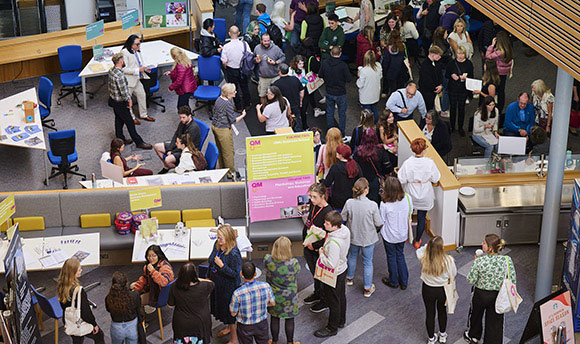QMU Net-Zero Strategy: Delivering Net-Zero
Delivering Net-Zero
Net-zero is focused on carbon metrics, with it regarded as a proxy for impacts of climate change. A Net-Zero target is not an absolute zero emissions target which would be regarded as out of reach technically and financially for most organisations.
The aim is for residual scope 1 and 2 total emissions to represent no more than 10% of 2020 emissions, calculated in accordance with Science Based Targets.
Reduction targets have been calculated in accordance with Science Based Targets and have utilised the linear regression reduction from 2020, with interim targets and the net-zero date based on this methodology.
Scope 1 & 2 Targets
In setting a target date for decarbonisation, legislative targets and associated guidance have been reviewed in parallel with the current technical and economic feasibility.
The approach adopted recognises those drivers while assuming a pragmatic approach which recognises:
- alignment with the planned elemental asset renewal lifecycles within the estate with lower embodied energy and low carbon technologies introduced.
- that actual carbon reduction will not follow a linear regression but that the introduction of transformational technologies at key stages of the transition will achieve a paradigm shift.
Baseline Emissions
{image}
{image}
It should be noted that 2020-21 academic year was impacted by COVID, although this had a marginal impact on scope 1 and 2 emissions. Emissions from biomass have been included in alignment with Science Based Targets although these are not reported under public emissions reporting.
Energy and Carbon Benchmarking
The Scottish Government Heat in Buildings Strategy proposes that all residential property meets at least EPC (Energy Performance Certificate) C or equivalent by 2033. This is a standard currently met and exceeded by the University residences.
However, when applying energy benchmarking to the residences, they are significantly above the current best practice benchmarks with this operational energy use intensity driven by heating. This is equally apparent in the non-residential estate. The divergence in energy intensity, despite having a low energy design (BREEAM Excellent) illustrates the well documented performance gaps between modelling predictions and operation in use and the necessity to ensure ongoing management, monitoring and continuous improvement.
While achievement of current new-build performance standards may not be possible, they provide a model against which to test potential opportunities for improvement, particularly in relation to building fabric.
Demand Reduction
The University is well placed to manage energy use within the campus estate with this being driven by investment in smart technology and digital modelling.
A campus wide building management system (BMS) is installed which enables control of heating and cooling systems. Enhancement and upgrading of the system are built into our operational facilities management contract and in our long-term maintenance programme supported by external experts. The objectives are to improve occupancy related utilisation, optimise performance through weather compensation and enhance equipment performance monitoring.
We are building our capacity and skills within our team to enhance utilisation of the wealth of data this provides in conjunction with an analytics platform and drive incremental improvements in operations.
{image}



